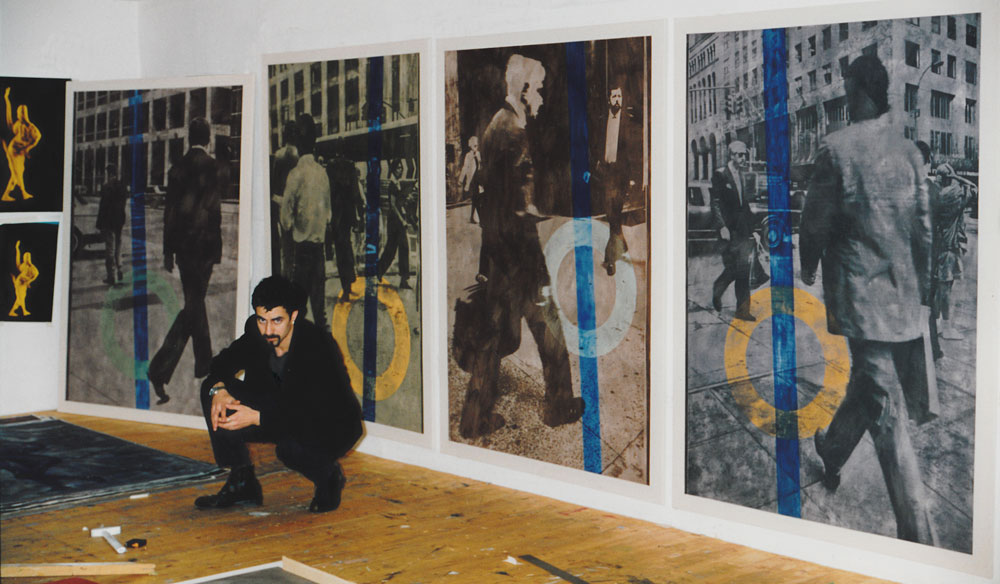 artist's
studio 1992, Duesseldorf. paintings with light-sensitive gum-bichromate
pigment-emulsions on watercolorpaper and canvass. 127 x 180 cm. pvt.collections.
artist's
studio 1992, Duesseldorf. paintings with light-sensitive gum-bichromate
pigment-emulsions on watercolorpaper and canvass. 127 x 180 cm. pvt.collections.
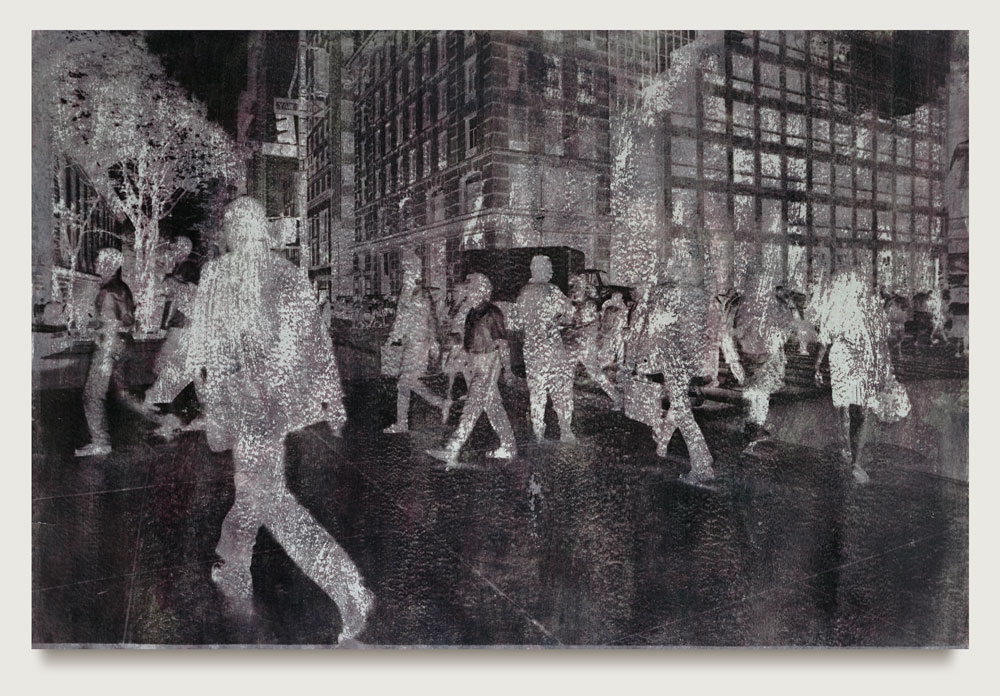 Incident
to a curve, 1992, gum-bichromate pigment-emulsion, silver-bromide emulsion,
watercolorpaper. 73 x 116 cm. pvt.collection via galerie hans mayer, art
basel 1992.
Incident
to a curve, 1992, gum-bichromate pigment-emulsion, silver-bromide emulsion,
watercolorpaper. 73 x 116 cm. pvt.collection via galerie hans mayer, art
basel 1992.
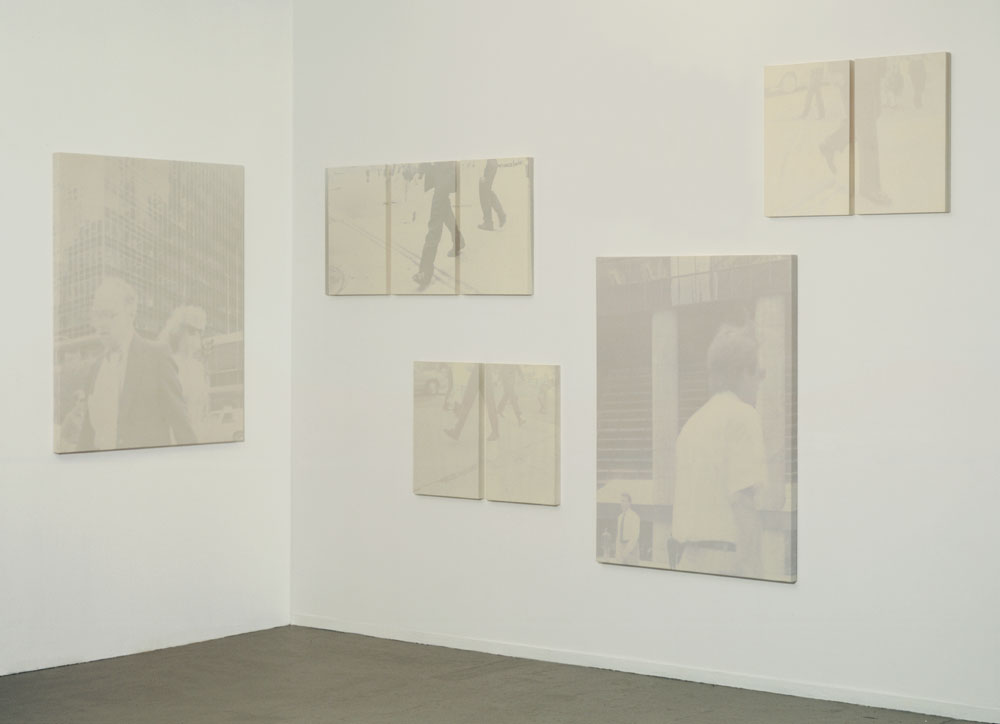
 artist's
studio 1996, Duesseldorf. paintings with light-sensitive gum-bichromate
pigment-emulsions on watercolorpaper, wrap-mounted on mdf. pvt.collections.
artist's
studio 1996, Duesseldorf. paintings with light-sensitive gum-bichromate
pigment-emulsions on watercolorpaper, wrap-mounted on mdf. pvt.collections.
 Incident
to a curve, 1992, gum-bichromate pigment-emulsion, watercolorpaper. 73 x
116 cm.
Incident
to a curve, 1992, gum-bichromate pigment-emulsion, watercolorpaper. 73 x
116 cm.
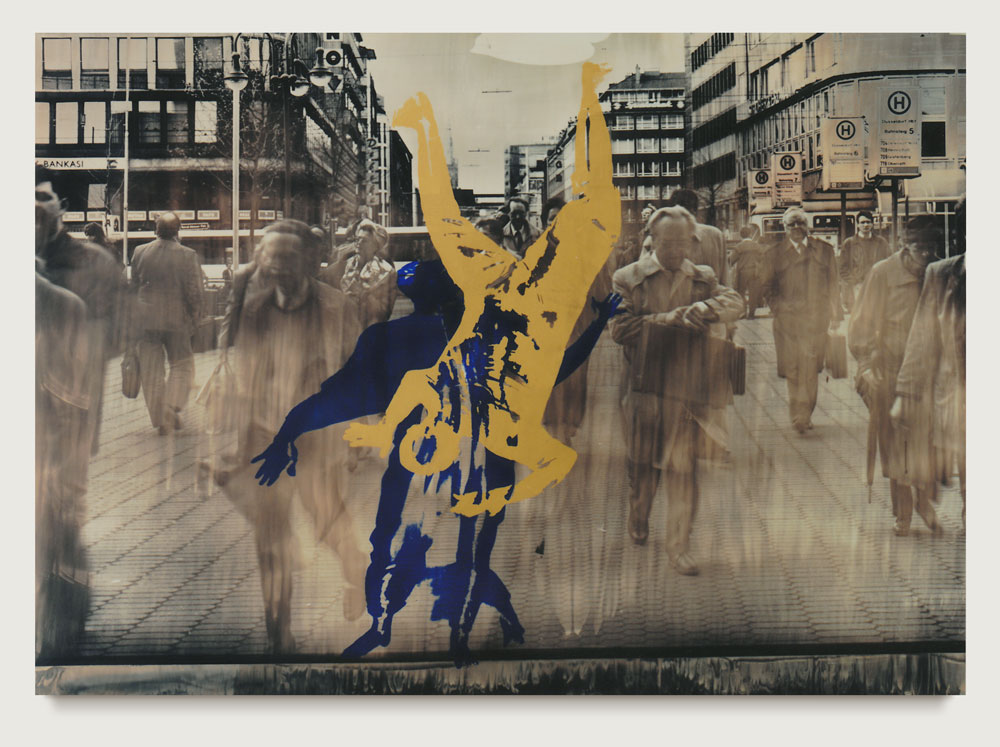 Incident
to a curve, 1995, gum-bichromate pigment-emulsion, silver-bromide emulsion,
watercolorpaper. 127 x 180 cm. pvt.collection.
Incident
to a curve, 1995, gum-bichromate pigment-emulsion, silver-bromide emulsion,
watercolorpaper. 127 x 180 cm. pvt.collection.
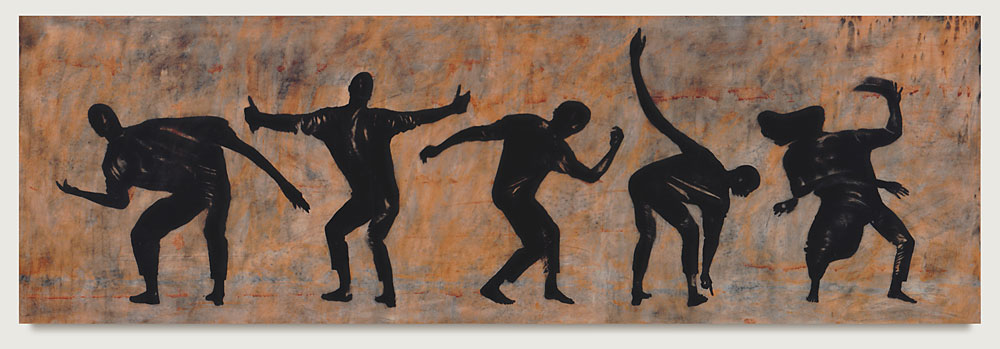 Mistaken
Identity II, 1993, gum-bichromate pigment-emulsion, watercolorpaper. 130
x 400 cm.
Mistaken
Identity II, 1993, gum-bichromate pigment-emulsion, watercolorpaper. 130
x 400 cm.
This is not painting over or under photos, the photographic image is in the painting. With this medium, I am able to suspend the mummified moments of photography in the fluid world of painting... exploring photography through the painter's eye. - DF
Gum-Bichromate (high tech for old school)
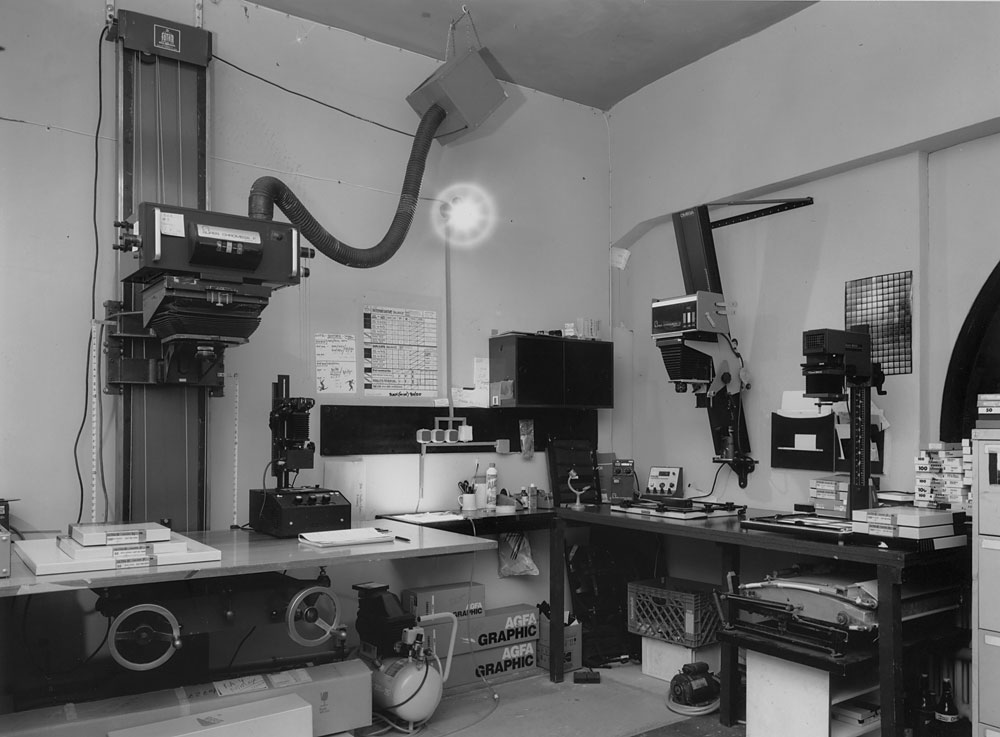

Darkroom equipment in
Fried's atelier Duesseldorf, photo 1996. His paintings using self-recipied
pigment-bichromate emulsions required producing full scale negatives up
to 4 meters. In his later color photogram
work, bubbles were exposed over wet color film and photopaper, necessitating
immediate processing and professional color developing on the spot. Here,
he also produced numerous large scale cibachrome and c-print
artworks. Fried's knowledge and equipment in this field was originally
amassed throughout the 80's in NYC. As a painter, his growing fascination
with the photographic medium in the mid-80's led him to freelance for several
top photolabs, culminating in a 2 year stint as C-print department manager
and consultant for Duggal photolabs. While Duggal was a highly competitive
and commercial facility, Fried pioneered and implemented the highest standards
of fine art color printing for contemporary artists. When he relocated to
Germany in 1989, he had most of his personal equipment shipped to his studio
in Duesseldorf.
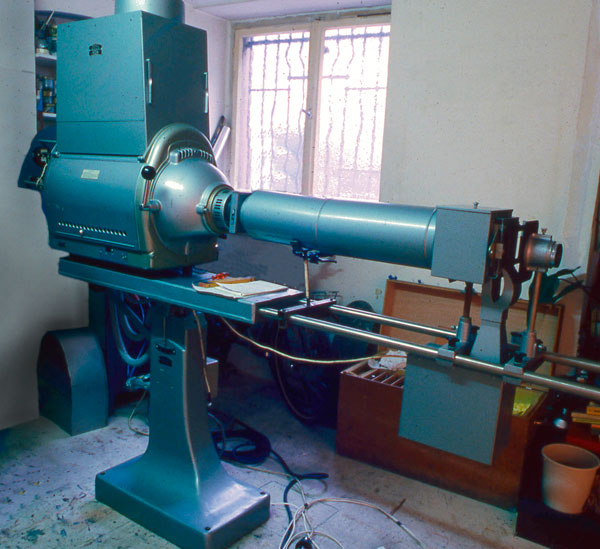
One method for "exposing" his paintings was a modified 35mm movie projector to project single 10x10 cm transparencies without melting the stationary negative. The light output is much higher than standard darkroom enlargers, utilizing a 6500 Watt Daylight arc-lamp. (Thats bright enough to project on clouds) In this way he was able to imprint images into his large scale emulsion-paintings, which have a very low light sensitivity, without the need for full painting-size negatives. Even with such a powerful projector, typical exposure times were around 3-8 hours depending on projection sizes, emulsion, and colors used. photo 1993.
The basic process: Highest grade artists pigments are finely ground with gum-arabicum, and with an addition of critically minute amounts of Bichromate into the recipie, the paint gains photosensitivity. The normally water soluble emulsion is then painted at will onto fresh or pre-painted arches watercolor paper/canvass. This step is freeform, just like painting. Once dry, the painting is exposed to photographic imagery. The light- in full gradations - makes the the paint insolluable in water. The paintings are then reverse painted at will with water and brushes to remove the soluble areas, which do not recieve relative amounts of light-information through the negative.
Earlier forms of this medium exist long before Kodak, Fuji, Agfa came around. 1838 the Daguerreotype was the only game in town, then around 1850 the gum-bichromate or carbon-print emerged. It preceeded any form of silver-bromide printing and soon became the first photographic method to print in colors. It was used strictly by early chemically trained photographers. Painters had no access to this technical knowledge or medium. Historical photographic gum-bichromate prints were never bigger than a few cenimeters in size, and unlike Fried's recipies, they were highly toxic for the user and environment. Historical methods required ca.30% dichromate emulsions, where Fried was able to acheive emulsions with a percent of 0.05%. Trading ASA-sensitivity for health, his recipies need much more light.
Below: artist at work 1991, method using full size negatives.

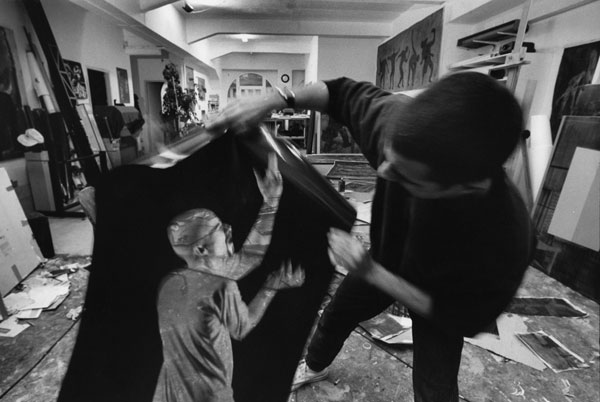

photos: heinz günter mebusch, 1991.
Artist's eariest works -1970's: LINK
Street Art -1980's: LINK
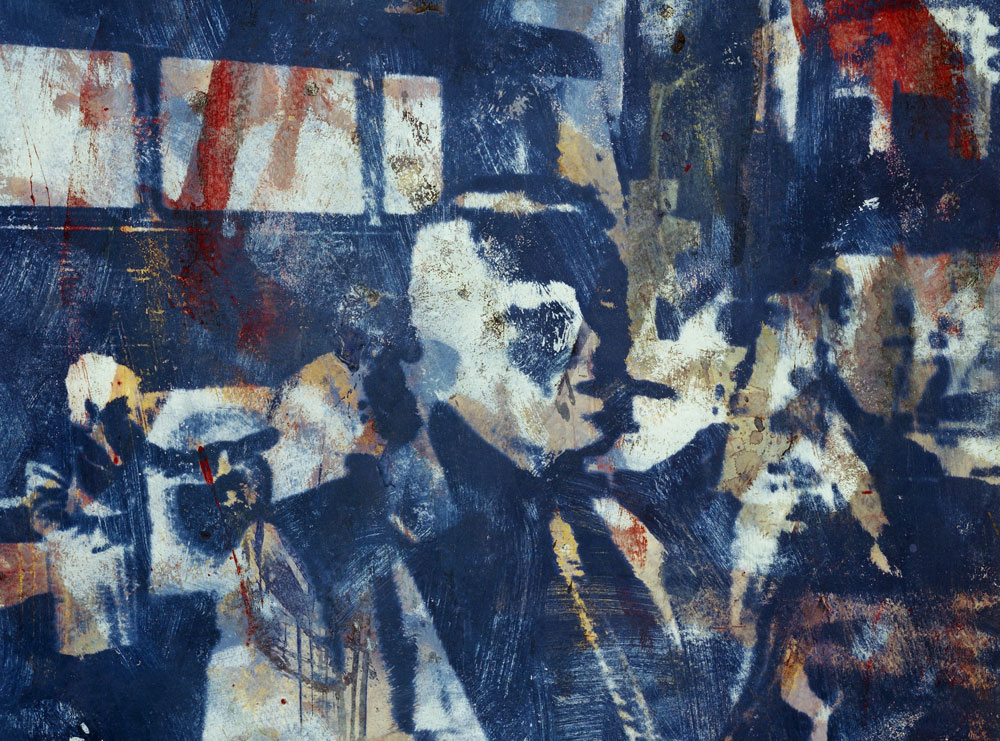
Detail, Incident to a
curve. 1991.

Incident to a curve no.7,
1992, gum-bichromate pigment-emulsion, watercolorpaper, 73 x 116 cm.
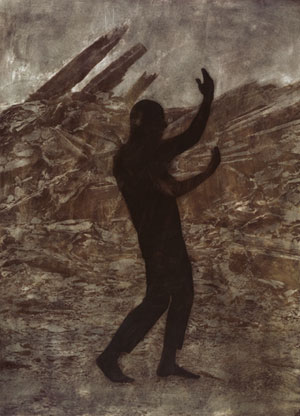
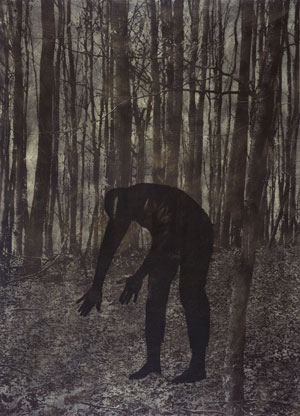
Mistaken Identity, triptychon, 1993, gum-bichromate pigment-emulsion, watercolorpaper, each 140 x 190 cm.
Artist's eariest works - 1970's: LINK
Street Art - 1980's: LINK